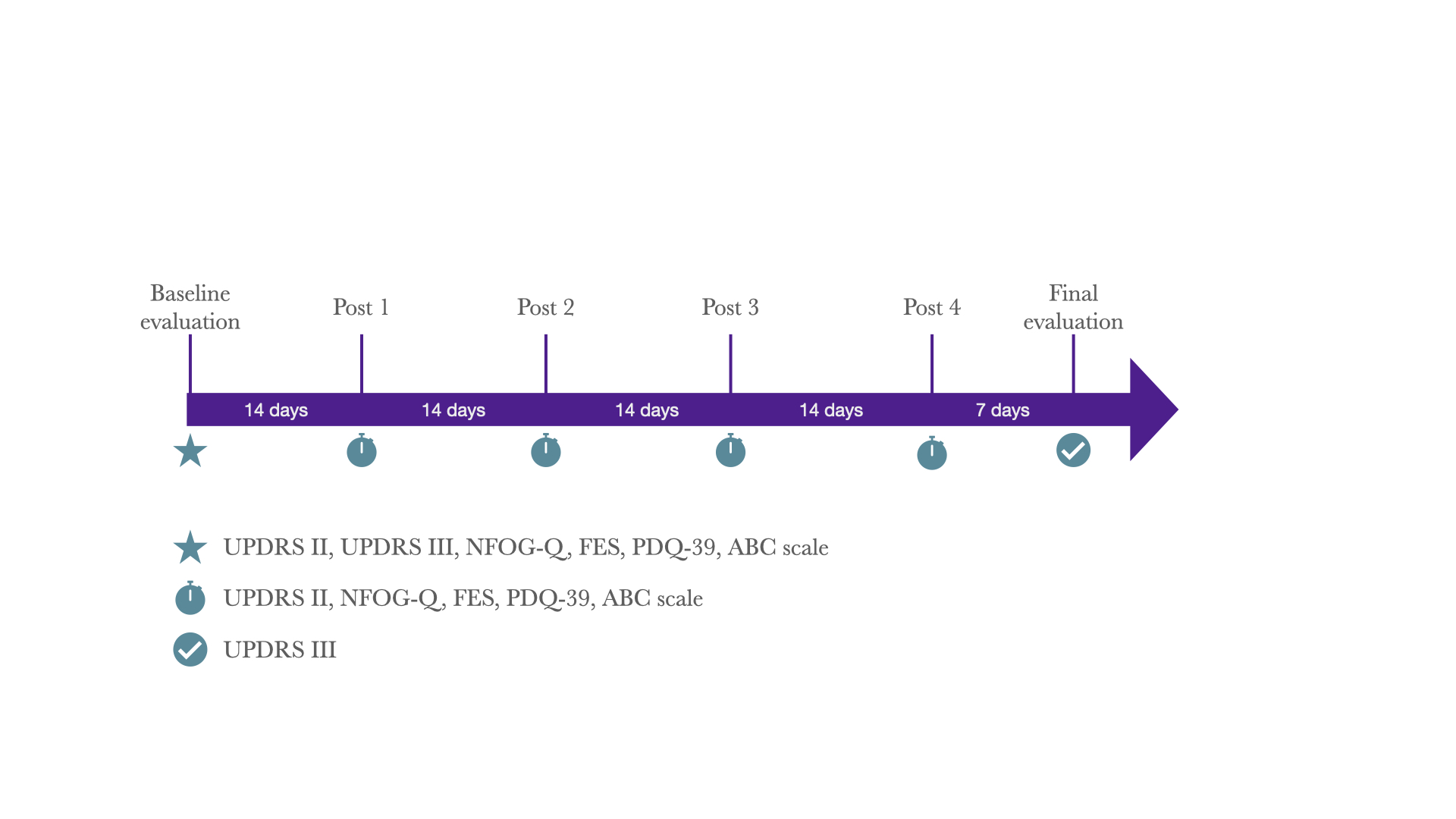Category: Parkinson’s Disease: Clinical Trials
Objective: To compare gait disorders in patients with Parkinson’s disease (PD) and Deep Brain Stimulation (DBS) using continuous vs cycling (40sec on, 2sec off) stimulation.
Background: Gait disorders are common in patients with moderate and advanced Parkinson’s disease. Compared to appendicular symptoms, gait disorders tend to be more resistant to medical and regular DBS treatment, and greatly impairs patients’ quality of life. Some stimulation strategies have been tried to improve gait in PD patients, but so far most of them resulted in concomitant worsening of appendicular symptoms. New stimulation strategies such as cycling stimulation could potentially improve gait disorders without impairment of appendicular symptoms.
Method: This is a randomized, prospective, double-blind, cross-over clinical trial registered at clinicaltrials.gov (protocol NCT04408573) and conducted in University of São Paulo to evaluate different DBS programs in PD patients’ gait. Primary outcomes are change in part II of the Unified Parkinson’s disease rating scale (UPDRS II) and change in the New Freezing of Gait Questionnaire (NFOG-Q) comparing four types of DBS stimulation programs: 1) regular continuous high frequency (HF, >130Hz) stimulation, 2) cycling HF stimulation, 3) continuous low frequency (LF, 80Hz) stimulation and 4) cycling LF stimulation.
Eligibility criteria are: 1) diagnosis of idiopathic PD, 2) currently receiving DBS, and 3) underlying gait disorders despite optimal medical and stimulation treatment (score over or equal to one in the subitem 2.12 of the UPDRS)
Patients are evaluated at baseline with scales mentioned above, as well as with the Falls Efficacy Scale (FES), the Parkinson’s Disease Questionnaire (PDQ-39), the Activities-Specific Balance Confidence Scale (ABC Scale), and UPDRS part III. Each stimulation group is tested for two weeks, after which patients answer the previous questionnaires at home. At the return visit, UPDRS part III is repeated in the two best groups according to the patient’s impression (Figure)
Results: To date, six patients were included: three preferred LF cycling, two preferred HF continuous, and one chose LF continuous as the best program. An interim analysis of the results is planned to be presented in the MDS congress when 10 patients complete the protocol
Conclusion: Cycling stimulation is an available and simple strategy that could potentially improve gait in PD patients
To cite this abstract in AMA style:
C. França, A. Bertholo, A. Pelicheck, I. Paraguay, J. Reis, D. Barros, J. Yamamoto, A. Coelho, R. Otani, M. Reuter, R. Carra, T. Guimarães, M. Teixeira, E. Barbosa, R. Cury. Cycling Deep Brain Stimulation for Parkinson’s Disease [abstract]. Mov Disord. 2022; 37 (suppl 2). https://www.mdsabstracts.org/abstract/cycling-deep-brain-stimulation-for-parkinsons-disease/. Accessed March 29, 2025.« Back to 2022 International Congress
MDS Abstracts - https://www.mdsabstracts.org/abstract/cycling-deep-brain-stimulation-for-parkinsons-disease/

